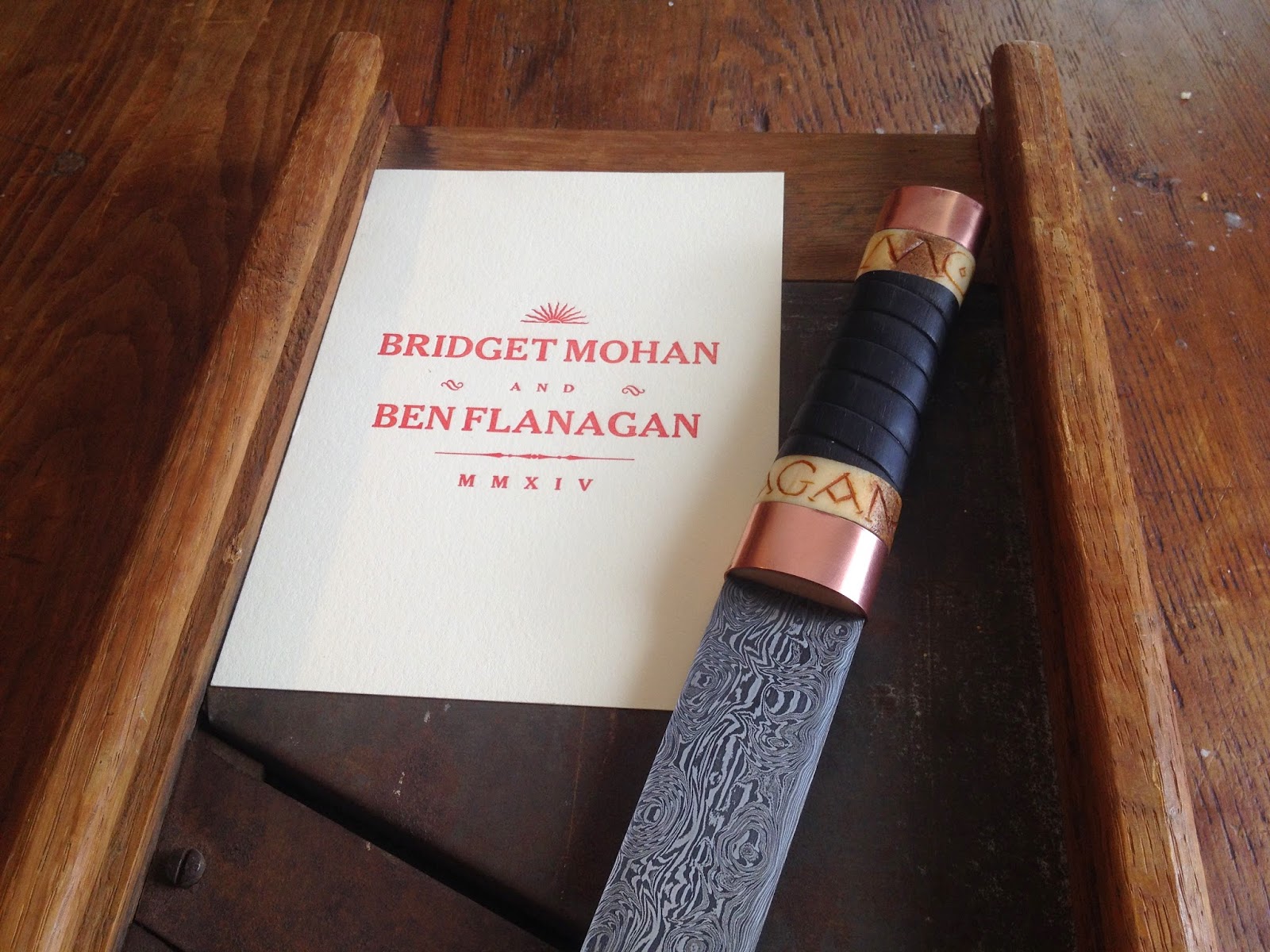This is the blade I presented to Bridget Mohan and Ben Flanagan one beautiful summer night in 2014. It's now theirs, and it could not have changed hands at a more joyous gathering. It's inspired by 15th- and 16th-century Irish fighting knives called skeins, but with a blade of cut and folded carbon and nickel steels, and a handle of ancient Irish bog-oak, native New Hampshire moose antler, and simple copper.
But alongside the making of this object, I have been exploring what are new avenues of creation to me, and attempting to delve deeper into the inexplicable but penetrating meaning I find in the hand-crafts.
Since June, I have been working in the letterpress print shop of Bill Muller, who has been in the craft for over thirty years but currently does business as Big Wheel Press in Easthampton, Massachusetts. Letterpress answers my craving for craft deeply, and Bill is an excellent teacher. The weathered metal, dark wood, and mechanical movements of the shop are incredibly comforting and exciting to me, and to be additionally surrounded by breathtakingly beautiful words, letters, and graphics designed, arranged, and printed with such care and detail is frankly unbelievable.
Needless to say, I was enchanted, and began to exchange hours of work under Bill for his experienced instruction, practiced eye, and sweet materials & equipment. I'll go into more detail about it all later, but my first real solo project was this one: a memorial certificate go along with the wedding blade.
Rather than arranging classic moveable type into a chase (the frame pictured to the right), I used the Ludlow typecasting machine to cast entire lines of type for arrangement in the printing block. The brass dies (pictured below &two pictures above ) were arranged in a composing stick and engaged in the Ludlow machine, where they were injected with molten lead and with a ka-chunk of a clamp-release, a leaden "slug" of type slid out onto a little tray for setting and printing.
Letterpress, when conducted with care, can look incredibly clean and refined. I love everything sensory about it: the smells, sounds, & rhythmic movements of presses and typecasters, the organization and repetition of type drawers and the miniscule joy of finding the most obscure and perfect ornamentation, and the ever-exciting trawling through libraries of old graphic blocks.
The only part I mind is having to keep my hands clean. But I suppose I can compromise.












